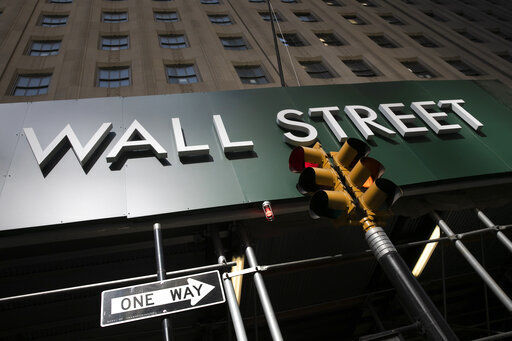NEW YORK — Stocks are drifting in early trading on Wall Street today, with indexes mixed, and the market remains within a breath of erasing the last of its pandemic losses.
The S&P 500 was virtually unchanged after the first 25 minutes of trading. It’s within 0.2% of its record, which was set in February before investors appreciated how much devastation the new coronavirus would cause for the global economy.
The Dow Jones Industrial Average was down 29 points, or 0.1%, at 27,947, as of 8:55 a.m. Central time, and the Nasdaq composite was up 0.4%.
Treasury yields perked higher after a report showed that fewer than 1 million U.S. workers filed for unemployment benefits last week. It’s still an incredibly high number, but it’s the first time the tally has dropped below that threshold since March, before widespread business lockdowns caused a tsunami of layoffs.
Economists said the drop in jobless claims, which was better than the market was expecting, is an encouraging step. But they also cautioned that it could be more of an outlier than a trend, and more data reports are needed to confirm it.
After the report’s release, the yield on the 10-year Treasury rallied back from an earlier dip, and it was sitting at 0.69% in morning trading. It was at 0.57% just on Monday.
Wall Street has erased almost all of the nearly 34% drop the S&P 500 suffered from late February into March, even though the economy is still hobbled despite some recent improvements.
Massive efforts to support the economy by the Federal Reserve and U.S. government helped trigger the rally, and investors are now waiting for Congress and the White House to deliver another round of aid after unemployment benefits and other measures in the last tranche expired.
Democrats and Republicans remain far apart, but hope remains on Wall Street that they’ll reach a deal on stimulus that investors say is crucially needed.
“The stalemate in Washington certainly looms large, and it’s unclear how long the market will tolerate the impasse,” said Mike Loewengart, managing director of investment strategy at E-Trade Financial. “It’s nothing short of impressive that the S&P flirts with record highs in just five months since the downturn, but it’s unknown if the disconnect between economic data and market activity will continue.”
Other analysts also urged caution following the market’s huge run back to a record, even if numbers of new U.S. coronavirus cases are moderating and companies say they’re making progress in developing a vaccine for COVID-19.
“Encouraging signs of U.S. COVID curve flattening alongside vaccine hopes are reason for cautious optimism, not unbridled exuberance,” said Hayaki Narita at Mizuho Bank in Singapore.
Big Tech stocks were once again leading the market, with all five of the market’s biggest titans making modest gains. Apple, Microsoft, Amazon, Facebook and Google’s parent company together make up more than 22% of the S&P 500, giving their movements extra heft in the index, and each rose at least 0.6%.
Cisco slumped 10.8% for the biggest loss in the S&P 500, even though it reported better results for its latest quarter than Wall Street expected. It gave a forecast for the current quarter that fell short of analysts’ forecasts.
In Asian stock markets, Japan’s benchmark Nikkei 225 jumped 1.8%, South Korea’s Kospi gained 0.2% and Hong Kong’s Hang Seng slipped 0.1%. Stocks in Shanghai were virtually flat.
In European markets, Germany’s DAX lost 0.6%, and France’s CAC 40 fell 0.6%. The FTSE 100 in London dropped 1.3%.
Benchmark U.S. crude edged down 2 cents to $42.65 per barrel. Brent crude, the international standard, was down 0.2% at $45.36 per barrel.
Gold, which has been setting records recently, slipped 40 cents to $1,948.60 per ounce.


